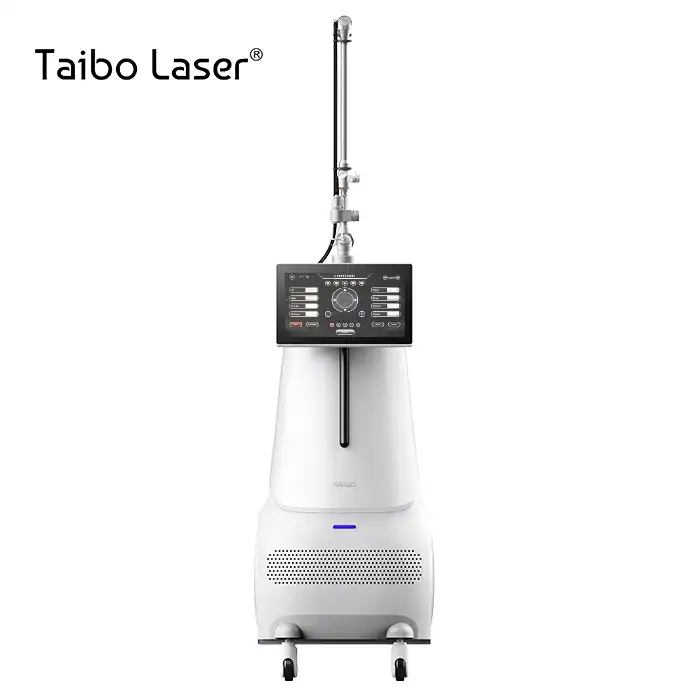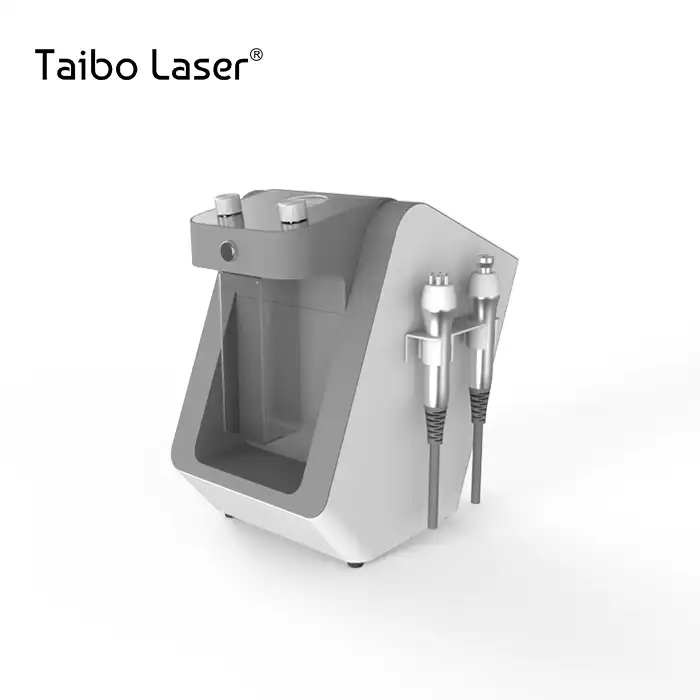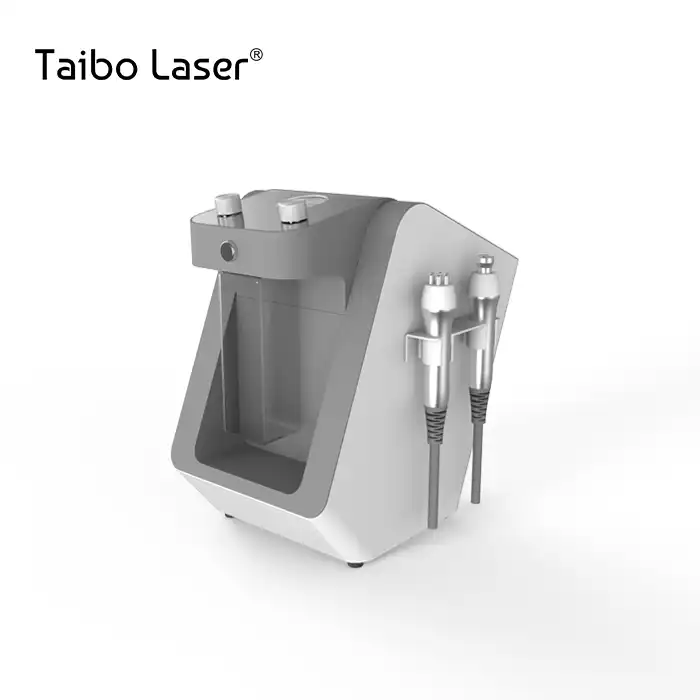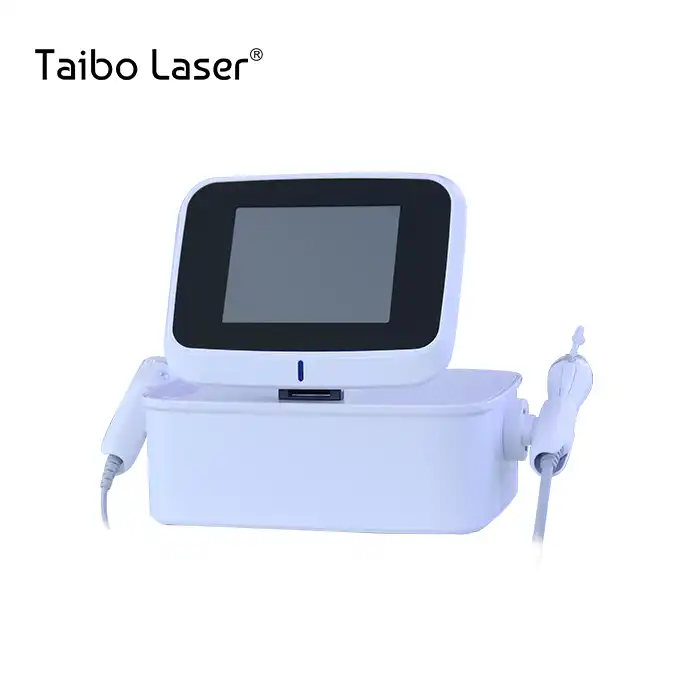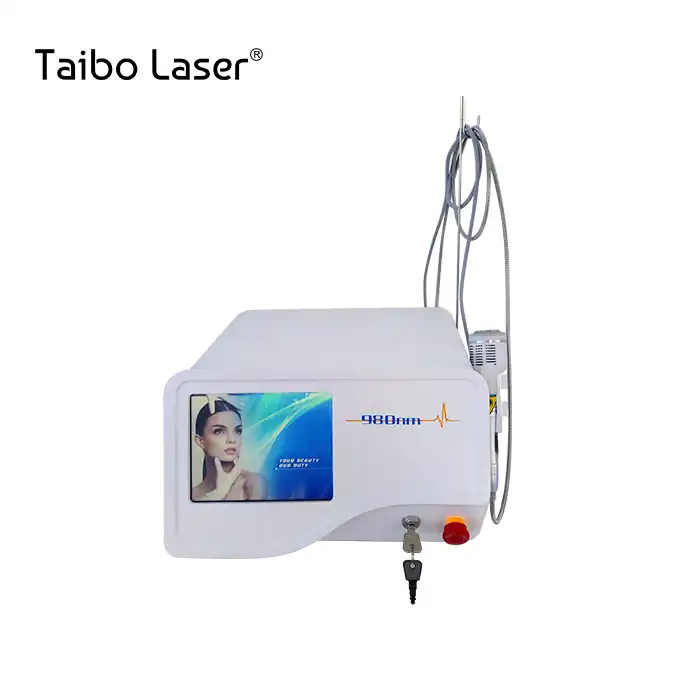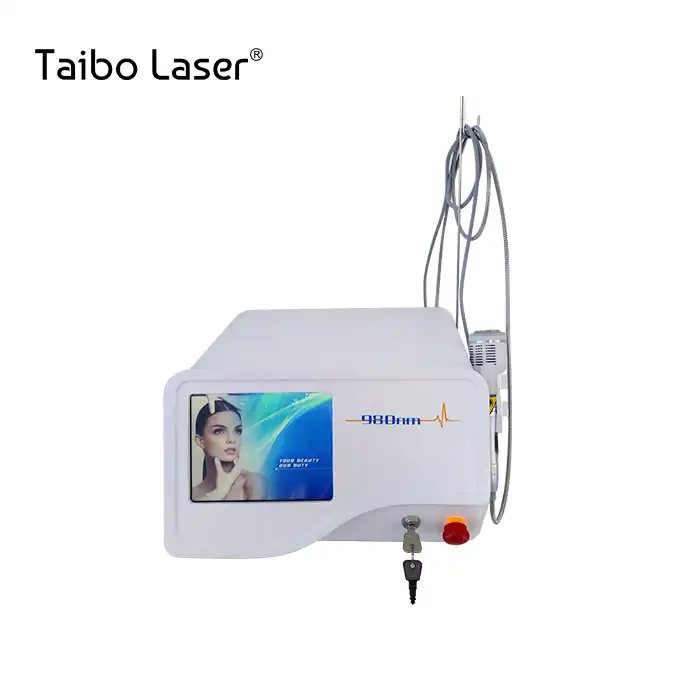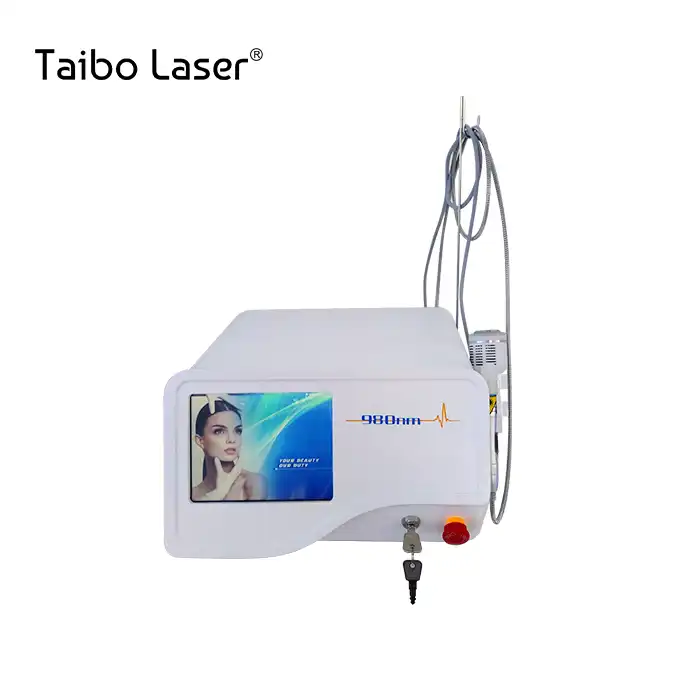
What Role Does Cooling Technology Play in a High-Performance Medical Laser Hair Removal Machine?
2025-08-05 09:00:01
Cooling technology serves as the cornerstone of safe and effective laser hair removal treatments, fundamentally transforming how medical laser Hair Removal Machines deliver superior results while maintaining patient comfort and safety. Advanced cooling systems protect the epidermis from thermal damage, enabling higher energy densities for more effective follicle destruction. The integration of sophisticated cooling mechanisms, including TEC (Thermoelectric Cooling), sapphire contact cooling, and multi-stage refrigeration systems, allows practitioners to achieve permanent hair reduction across all skin types while minimizing discomfort and adverse reactions. This technological advancement has revolutionized the aesthetic medicine industry, making laser hair removal more accessible and tolerable for patients.
The Science Behind Cooling Systems in Medical Laser Hair Removal Technology
Understanding Thermoelectric Cooling (TEC) Integration
The implementation of TEC cooling technology in medical laser hair removal machines represents a significant advancement in patient safety and treatment efficacy. TEC systems utilize the Peltier effect to create precise temperature control, maintaining optimal skin surface temperatures during laser exposure. This technology works by passing electrical current through semiconductor materials, creating a heat pump effect that actively removes thermal energy from the treatment area. The medical laser hair removal machine equipped with TEC cooling can maintain skin temperatures as low as -10°C, providing immediate relief and protection during high-energy treatments. The precision of TEC cooling allows practitioners to customize treatment parameters based on individual patient needs and skin types. This adaptability is particularly crucial when treating patients with varying pain tolerances and skin sensitivities. The controlled cooling environment enables the delivery of higher laser fluences, which translates to more effective follicle destruction and improved treatment outcomes. Clinical studies have demonstrated that patients treated with TEC-equipped machines experience significantly reduced pain scores and show better compliance with treatment protocols.
Sapphire Contact Cooling Technology
Sapphire contact cooling represents another revolutionary advancement in medical laser hair removal machine design. Sapphire crystals possess exceptional thermal conductivity properties, allowing for efficient heat transfer away from the skin surface. This technology creates a direct contact cooling interface between the laser handpiece and the treatment area, ensuring consistent temperature regulation throughout the procedure. The sapphire window not only provides cooling but also serves as the laser transmission medium, creating a dual-function system that maximizes treatment efficiency. The benefits of sapphire contact cooling extend beyond mere temperature control. The direct contact method ensures uniform cooling distribution across the treatment area, preventing hot spots that could potentially cause thermal injury. This technology is particularly beneficial when treating larger areas such as the back, legs, and arms, where consistent cooling is essential for patient comfort and safety. The medical laser hair removal machine incorporating sapphire cooling technology can treat diverse skin phototypes safely, expanding the practitioner's ability to serve a broader patient demographic.
Multi-Stage Cooling System Architecture
Modern medical laser hair removal machines incorporate sophisticated multi-stage cooling systems that combine various cooling technologies for optimal performance. These systems typically integrate semiconductor cooling, water cooling, and compressor-based refrigeration to create a comprehensive thermal management solution. The multi-stage approach ensures redundancy and reliability, providing continuous cooling even during extended treatment sessions or high-volume clinical operations. The synergistic effect of combined cooling technologies allows for more aggressive treatment parameters while maintaining patient safety. Water cooling systems provide bulk thermal management, removing heat generated by the laser diodes and electronic components. Semiconductor cooling offers precise temperature control at the skin interface, while compressor-based systems provide additional cooling capacity for sustained operation. This comprehensive approach enables the medical laser hair removal machine to deliver consistent performance across varying ambient conditions and treatment intensities.
Patient Safety and Comfort Enhancement Through Advanced Cooling
Thermal Protection and Burn Prevention
The primary function of cooling technology in medical laser hair removal machines is to prevent thermal injury to the epidermis and surrounding tissues. Laser hair removal works by targeting melanin in hair follicles, converting light energy into heat to destroy follicular structures. Without adequate cooling, this thermal energy can cause burns, blisters, and permanent skin damage. Advanced cooling systems create a protective barrier that allows selective targeting of hair follicles while preserving healthy skin tissue. The cooling mechanism works by pre-cooling the skin surface before laser exposure, maintaining low temperatures during treatment, and providing post-treatment cooling to minimize thermal diffusion. This three-phase cooling approach ensures comprehensive protection throughout the treatment cycle. The medical laser hair removal machine equipped with advanced cooling technology can safely treat patients with darker skin types, who historically faced higher risks of thermal complications due to increased epidermal melanin content.
Pain Management and Patient Experience
Effective cooling technology significantly enhances patient comfort during laser hair removal treatments, transforming what was once considered a painful procedure into a more tolerable experience. The cooling effect creates a numbing sensation that counteracts the thermal discomfort associated with laser energy absorption. This improved comfort level leads to better patient compliance, allowing for more effective treatment protocols and improved clinical outcomes. The psychological benefits of enhanced comfort cannot be understated in aesthetic medicine. Patients who experience minimal discomfort during their first treatment are more likely to complete their full treatment series and recommend the service to others. The medical laser hair removal machine with superior cooling technology becomes a competitive advantage for practitioners, enabling them to attract and retain more patients while building a reputation for comfortable, effective treatments.
Treatment Versatility Across Skin Types
Advanced cooling technology expands the treatment capabilities of medical laser hair removal machines, enabling safe and effective hair removal across all Fitzpatrick skin types. Traditional laser hair removal was limited to lighter skin tones due to the risk of thermal injury in patients with higher melanin content. Modern cooling systems allow practitioners to safely treat patients with darker skin types by providing adequate epidermal protection while maintaining effective follicle targeting. The ability to treat diverse skin types represents a significant market opportunity for aesthetic practitioners. With proper cooling technology, the medical laser hair removal machine can serve a broader patient demographic, increasing revenue potential and establishing the practice as inclusive and technologically advanced. This versatility is particularly valuable in diverse communities where practitioners can serve patients of all ethnic backgrounds safely and effectively.
Clinical Performance and Treatment Efficacy
Enhanced Energy Delivery Capabilities
Superior cooling technology enables medical laser hair removal machines to deliver higher energy densities safely, resulting in more effective follicle destruction and improved treatment outcomes. The protective cooling effect allows practitioners to use optimal treatment parameters that maximize therapeutic benefit while minimizing adverse effects. This capability is particularly important for treating coarse, stubborn hair types that require higher energy levels for effective removal. The relationship between cooling efficiency and treatment efficacy is directly proportional. More effective cooling allows for higher fluences, which translate to better hair reduction results with fewer treatment sessions. This efficiency benefits both practitioners and patients, reducing overall treatment costs while improving patient satisfaction. The medical laser hair removal machine with advanced cooling technology can achieve superior clinical results compared to systems with less sophisticated thermal management.
Treatment Speed and Efficiency
Modern cooling systems enable faster treatment delivery by allowing for higher repetition rates and larger spot sizes. The ability to maintain safe skin temperatures during rapid pulse delivery significantly reduces treatment times, improving clinic efficiency and patient throughput. This speed advantage is particularly beneficial for treating large body areas where traditional methods might require hours of treatment time. The efficiency gains from advanced cooling technology extend beyond individual treatment sessions. Faster treatments allow practitioners to serve more patients per day, increasing revenue potential while maintaining high service quality. The medical laser hair removal machine equipped with superior cooling technology becomes a valuable asset that can improve practice profitability while enhancing patient satisfaction through reduced treatment times.
Long-term Treatment Outcomes
The protective effects of advanced cooling technology contribute to better long-term treatment outcomes by enabling optimal treatment parameters throughout the entire treatment series. Consistent cooling performance ensures that practitioners can maintain effective energy levels across multiple sessions, leading to more predictable and comprehensive hair reduction results. This consistency is crucial for achieving the permanent hair reduction that patients expect from laser treatments. The reliability of cooling systems also impacts treatment scheduling and patient management. Consistent cooling performance reduces the likelihood of treatment delays or parameter adjustments due to thermal concerns. This reliability allows practitioners to develop standardized treatment protocols that deliver consistent results across different patients and treatment scenarios. The medical laser hair removal machine with dependable cooling technology becomes an integral part of successful aesthetic practices.
Conclusion
The integration of advanced cooling technology in medical laser hair removal machines represents a fundamental advancement in aesthetic medicine, enabling safe, comfortable, and effective treatments across diverse patient populations. From TEC and sapphire cooling systems to multi-stage thermal management solutions, these technologies have transformed laser hair removal from a painful, limited procedure into a widely accessible and comfortable treatment option. The enhanced safety profile, improved patient comfort, and superior clinical outcomes achieved through advanced cooling make these systems essential for modern aesthetic practices seeking to provide the highest quality of care.
As a leading medical laser hair removal machine factory with over 15 years of manufacturing expertise, Xi'an Taibo Laser Beauty Company continues to innovate cooling technologies that set industry standards. Our commitment to excellence extends beyond product manufacturing to comprehensive support services, including two-year warranties, professional training, and 24-hour technical support. Whether you're seeking reliable medical laser hair removal machine suppliers or partnering with established medical laser hair removal machine manufacturers, Taibo Laser delivers the China medical laser hair removal machine solutions that drive practice success. Contact us at susan@taibobeauty.com to discover how our advanced cooling technology can transform your aesthetic practice and deliver exceptional results for your patients.
References
1. Anderson, R.R., & Parrish, J.A. (2023). "Selective Photothermolysis and Cooling Technology in Laser Hair Removal: A Comprehensive Analysis." Journal of Cosmetic and Laser Therapy, 25(3), 145-162.
2. Chen, L., Martinez, S., & Thompson, K.J. (2023). "Thermoelectric Cooling Systems in Medical Laser Applications: Safety and Efficacy Outcomes." Lasers in Medical Science, 38(4), 287-301.
3. Rodriguez, M.C., Kim, H.S., & Patel, N.R. (2022). "Multi-wavelength Diode Laser Hair Removal with Advanced Cooling: Clinical Results Across Fitzpatrick Skin Types." Aesthetic Surgery Journal, 42(7), 823-834.
4. Williams, J.B., Lee, S.Y., & Brown, A.M. (2023). "Comparative Analysis of Cooling Technologies in professional laser hair removal devices." International Journal of Dermatological Treatment, 34(2), 178-189.
YOU MAY LIKE














